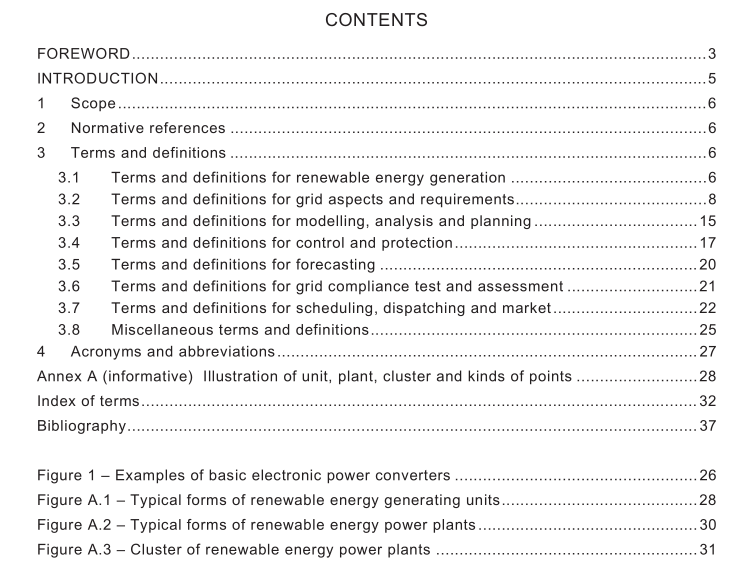IEC 62934 pdf – Gird integration of renewable energy generation – Terms and definitions

IEC 62934 pdf – Gird integration of renewable energy generation – Terms and definitions
3.2.25.5
over-frequency ride-throughOFRT
ability of a generating unit or power plant to stay connected during a limited duration rise ofsystem frequency
3.2.26
system oscillation3.2.26.1
low-frequency oscillationLFO
electrical oscillation occurring in an electric power system at a frequency usually between0,1 Hz to 3 Hz
Note 1 to entry: According to an extensive survey of IEEE technical literatures , the range 0,1 Hz to 3 Hz covers themajority of low-frequency oscillation events.
3.2.26.2
sub-synchronous oscillationsso
electrical oscillation occurring in an electric power system at a frequency smaller than thenominal system frequency and generally sustained for a minute or more
3.2.26.3
sub-synchronous resonancesSR
resonance between adjacent equipment in an electric power system, generating oscillations ata frequency smaller than the nominal system frequency and generally sustained for a minute ormore
[SOURCE: IEC60050-614:2016,614-01-18]
3.2.26.4
harmonic resonance
phenomenon producing amplification of harmonic components of the voltage or current resultingfrom sustained oscillation between the inductance and capacitance of adjacent items ofequipment or subsystems
[SOURCE: IEC 60050-614:2016,614-01-17]
3.3Terms and definitions for modelling, analysis and planning3.3.1
electrical simulation model
set of mathematical equations or logical functions used in time or frequency domain digitalsimulations which describe the dynamic characteristics of a facility or certain equipment
3.3.2
unit model
model for an individual renewable energy generating unit
3.3.3
lumped model
3.3.4
aggregated model
3.3.5
generic model
model that can be adapted to simulate different types of renewable energy generating units orpower plants by changing the model parameters
3.3.6
dynamic simulation
3.3.7
electromechanical simulationroot mean square simulationRMS simulation
dynamic simulation method based on root mean square model,which usually focuses on theelectromechanical processes of an electric power system under disturbance,and the typicalobservation time interval is from several seconds to tens of seconds after disturbance
3.3.8
electromagnetic transient simulationEMT simulation
dynamic simulation method to model the electro-magnetic transient behaviour of an electricpower system, where instantaneous values are used in the process,and the typical observationtime interval is from several microseconds to several seconds after a disturbance
3.3.9
production simulation
simulation of the dispatching process in electric power systems to determine the generationschedule of every electricity generating plant including a cost analysis
3.3.10
expected energy not suppliedEENS
[SOURCE: IEC 60050-692:2017,692-11-01]
3.3.11
penetration
Note 1 to entry: Relevant quantities are those defined in 3.3.12,3.3.13,3.3.14 and 3.3.15.3.3.12
installation penetration
ratio of nominal power of all renewable energy power plants to nominal power of all sources ina certain area of an electric power system









